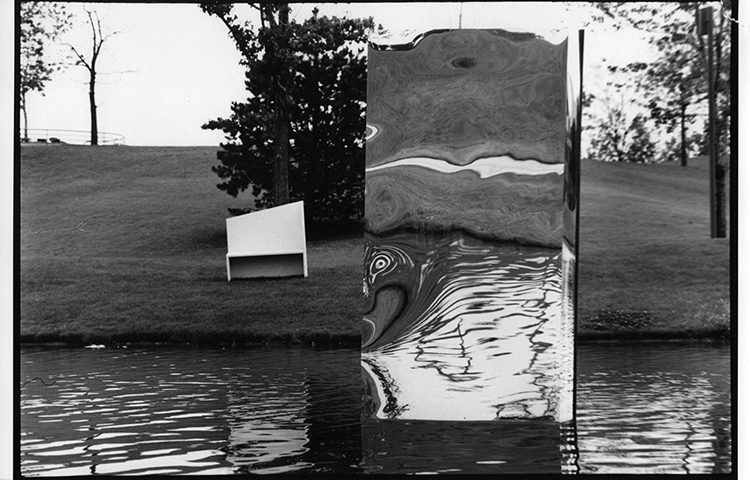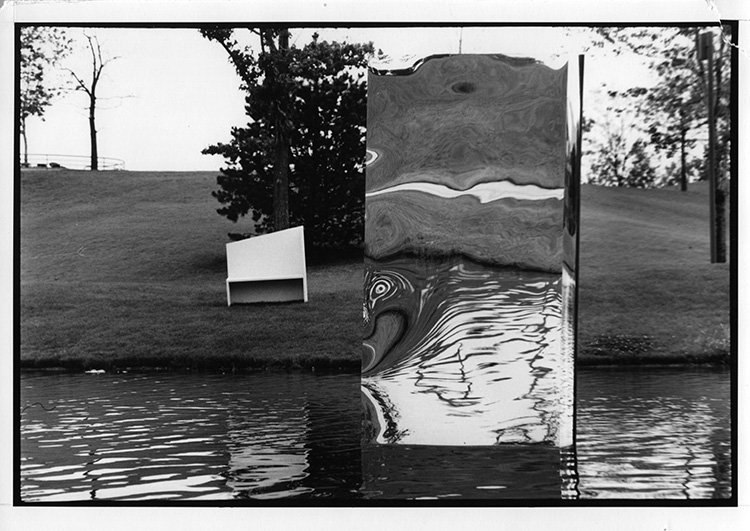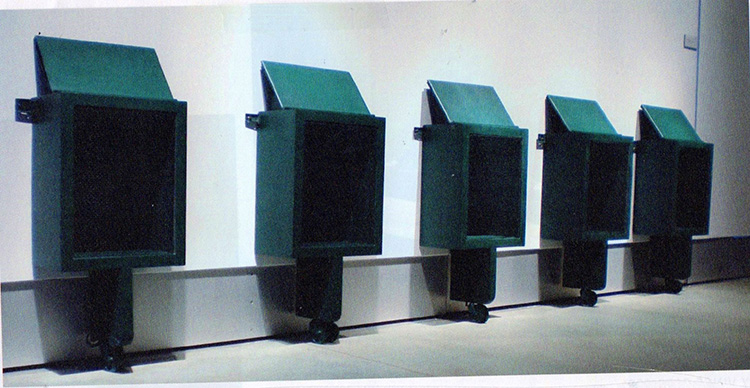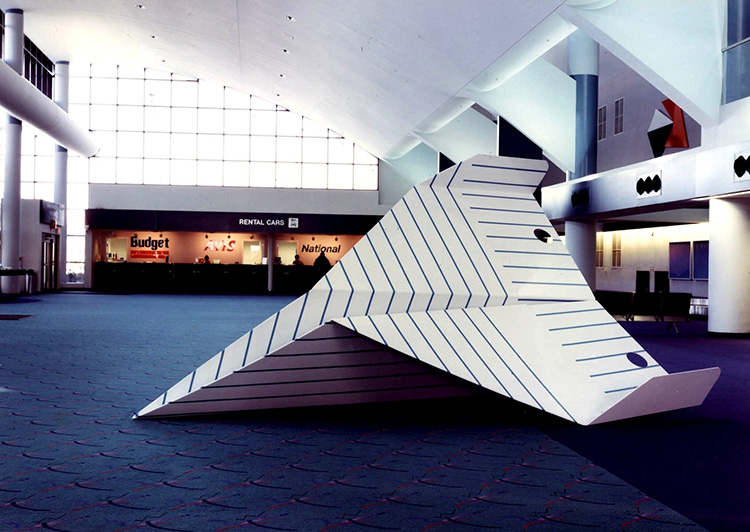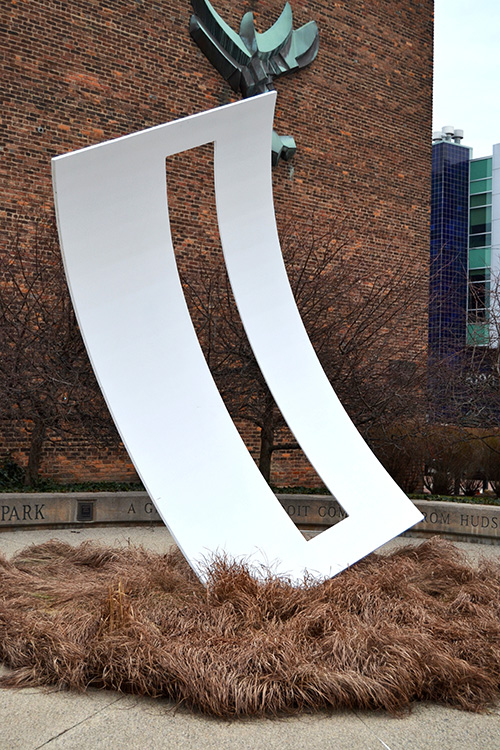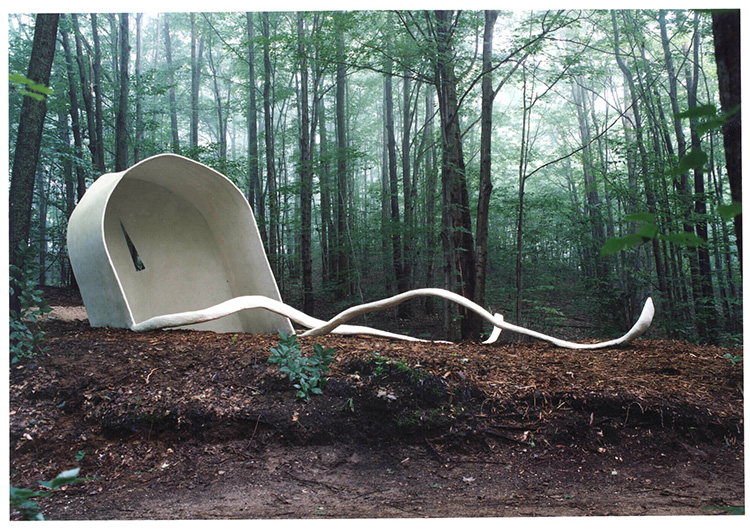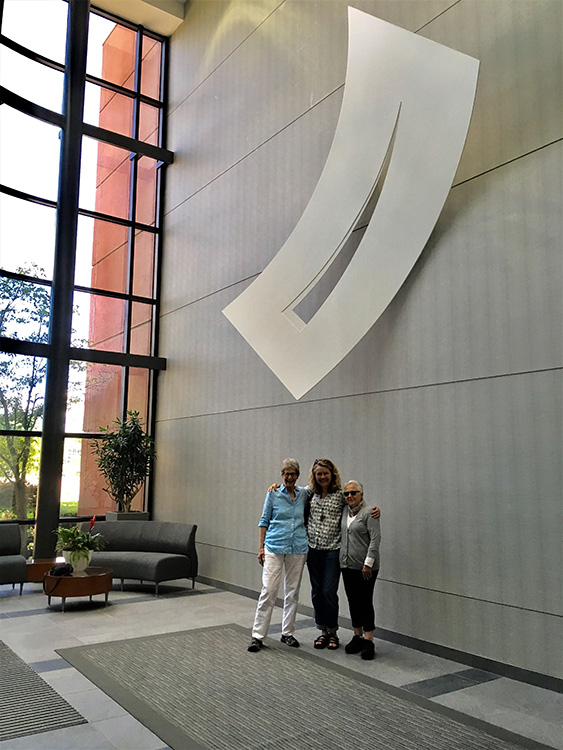
Lois Teicher: Private Voice, Public Benefit
July 9, 2009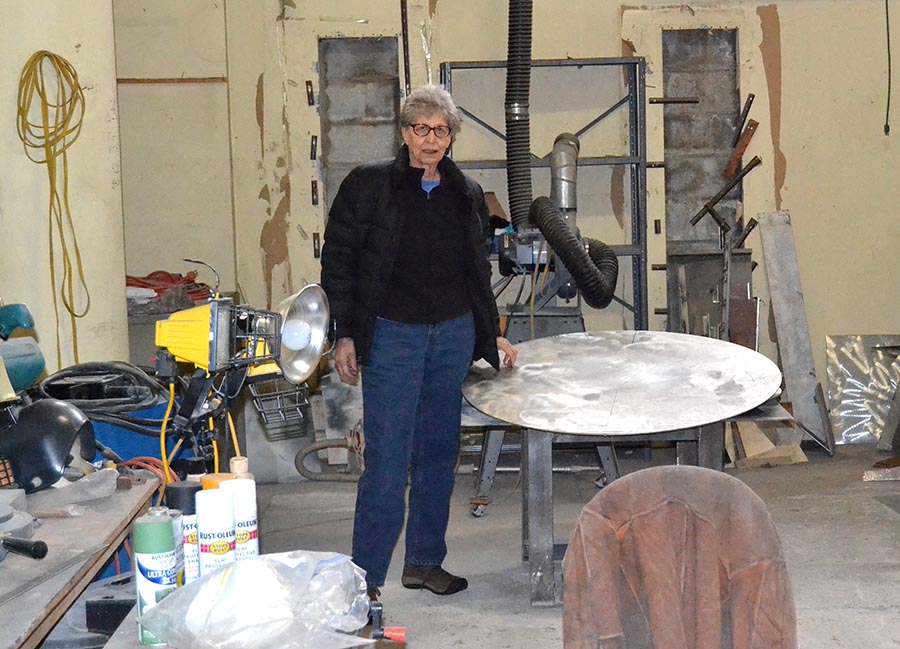
Lois Teicher: Woman of Steel
October 1, 2019Born Detroit, 1938 / BFA, College of Creative Studies; MFA, Eastern Michigan University / Lives in Dearborn, MI
Lois Teicher is one of the few women artists anywhere who has built a career around large-scale public sculpture. Even more unusual, she works squarely in a post-minimalist idiom of industrial materials and formal shapes. Most American women sculptors of Teicher’s generation are rightfully celebrated for incorporating the aesthetics of crafts into their sculpture, for introducing new materials, ornamentation, or a sense of working by hand. But Teicher chose a different path; her large-scale, site-specific sculptures look more like Ellsworth Kelly than Magdalena Abakanowicz. For Teicher, feminism gave the artist permission to overcome gender roles to fashion her own definition of what it means to be a sculptor. Over her long career, she has refined her ideas about shape and surface, posited new relationships of sculpture to its surroundings, and hardest of all, overcome the long odds of being a successful woman working in this manner. Finding satisfaction in learning to use industrial tools, as well as working with fabricators, engineers, and installers, she has developed a unique style for large-scale sculpture that emphasizes tension and a suggestion of movement that serves to deny her work’s complexity and weight.
Profoundly inspired by the feminist movement in the 1970s, Teicher went to art school after marrying and raising children, coming late to a professional identity as an artist. Quickly shedding early representational and performative aspects of her practice which were rooted in her personal struggle, works such as I Feel Like a Choreographer (1981) signal the beginnings of a shift toward bigger issues, what she characterizes as “going for something deeper, larger.” Gradually, she eliminated details to concentrate on form, shape, concept, and context rather than narrative, imagery, or even surface. She made an early commitment to site-specific sculpture, an idea that grew out of Observer/Observed (1986), a temporary sculpture commissioned for Chene Park. Working larger and working outdoors would allow her to consider the physical relationships of space to shape and shape to space. She began to think about space as a material aspect of her sculpture.
Her first completed site-specific commission was Paper Airplane Series with Deep Groove (1994) for Bishop International Airport in Flint, Michigan. The simple shape of a folded paper airplane is the basis for these three large steel sculptures that paradoxically seem lighter than air, as though they had just floated into the building.
The airplanes refer to the site, of course, but their whimsical, casual shapes warm and personalize a type of space that is often cold and generic. A similar idea, the geometric planes of folded paper, became the basis for outdoor benches, as well as for related series based on the shapes of a cardboard box and an envelope. Bonnet (1999), created for Michigan Legacy Art Park in Thompsonville, Michigan, suggests the ethos of early settlers in Michigan, an expression of Teicher’s interest in women’s history as well as an astute use of an object as symbol: In the shape of a pioneer woman’s white bonnet with long, trailing ties simply left on the ground in a forest glade, this melancholy and meditative sculpture reminds us of the difficult, largely forgotten lives of rural women both past and present, literally linking them to the earth.
Straightforward geometric shapes characterize later works, and Teicher uses these purely abstract forms to animate and refine their surroundings. The sculpture that most Detroiters probably know best is Curved Form with Rectangle and Space (2000) in Hudson’s Art Park outside the Scarab Club. This imposing white steel rectangle balances elegantly on one corner, its curved shape suggesting imperceptible movement. The steel sheet, with a long cutout that visually incorporates the space, feels weightless and delicate, but never precarious. The geometry of the installation’s different facets—rectangular sculpture, circular green site, square wall—plays off one another in color, shape, and proportion.
The pierced rectangle of Curved Form has become a signature shape for Teicher; it appears in a number of other situations, including a small-scale indoor version for a private collection and a wall installation in a commercial building in West Bloomfield, Michigan. The latter commission (2015-2018) presents four works in public areas of the building. Simple shapes—rectangles, squares, circles—in unmodulated brilliant colors—white, red, blue—cling effortlessly to the walls, defying gravity and seemingly held in place by surface tension. This commission is a beautifully comprehensive distillation of Teicher’s formal concerns, and the most fully articulated expression of the relationship between objects and space, her foremost interest as a sculptor.
MaryAnn Wilkinson, March 2018
